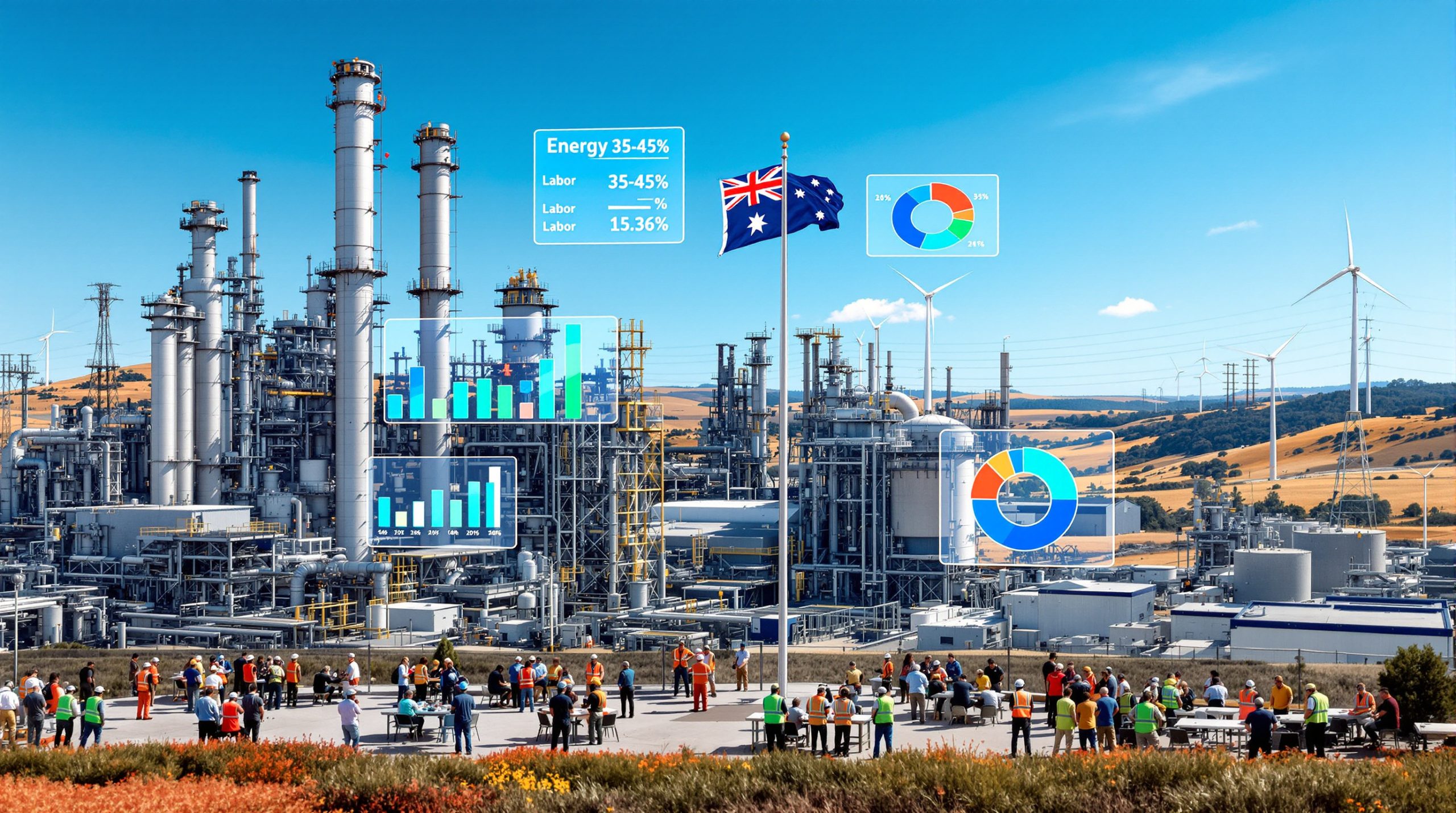The global energy transition hinges significantly on the availability and pricing of critical battery materials. These essential components include lithium, cobalt, nickel, graphite, and manganese, each serving distinct functions within modern energy storage systems. Lithium acts as the primary charge carrier in most battery chemistries, while cobalt provides thermal stability and energy density. Nickel contributes to higher energy capacity, graphite serves as the anode material, and manganese offers structural stability and safety benefits.
Battery materials form the backbone of electric vehicle manufacturing and grid-scale energy storage infrastructure. Without reliable access to these materials at reasonable costs, the transition to renewable energy systems becomes economically challenging. The interconnected nature of the battery materials market outlook reveals how disruptions in one material can cascade through entire supply chains, affecting everything from smartphone production to utility-scale storage projects.
The economic significance extends beyond individual components. The global battery materials supply chain represents a multi-billion dollar ecosystem that supports manufacturing jobs, mining operations, and technological innovation across multiple continents. Processing facilities, transportation networks, and recycling operations create additional layers of economic activity, making battery materials a cornerstone of modern industrial policy.
Primary Growth Drivers Reshaping Market Dynamics
Electric vehicle adoption represents the most significant demand driver for battery materials currently. Government mandates across Europe, North America, and Asia-Pacific are accelerating EV sales through purchase incentives, emissions regulations, and internal combustion engine phase-out timelines. Norway leads with over 80% of new vehicle sales being electric, while countries like the United Kingdom and Germany have set ambitious targets for 2030 and beyond.
Grid-scale energy storage system deployment creates another substantial demand vector. Utilities are increasingly installing large-capacity battery systems to balance renewable energy generation with consumption patterns. These installations require massive quantities of battery materials, with individual projects consuming hundreds of tons of lithium carbonate equivalent.
Consumer electronics demand continues evolving, though growth rates have stabilised compared to the explosive expansion of mobile devices in previous decades. However, emerging applications in wearable technology, electric tools, and home energy storage systems are creating new market segments that collectively represent significant material consumption.
Industrial and commercial battery applications encompass diverse sectors including telecommunications, uninterruptible power supplies, and electric construction equipment. These markets often require specialised battery chemistries optimised for specific performance characteristics, driving demand for particular material combinations.
Market Growth Projections by Forecast Period
| Forecast Period | Market Size Range | Key Growth Drivers |
|---|---|---|
| 2025 | $56-85 billion | EV adoption, ESS deployment |
| 2030-2033 | $88-270 billion | Technology advancement, policy support |
Regional Market Development Patterns
Asia-Pacific Manufacturing Dominance
China maintains overwhelming control over battery material processing and manufacturing, handling approximately 60% of global lithium processing and over 70% of cobalt refining. This concentration creates both efficiency benefits and supply chain vulnerabilities for global markets. Chinese companies have invested heavily in vertical integration, controlling everything from mining operations in Africa and South America to final battery cell production.
South Korea and Japan leverage advanced technology leadership in battery chemistry development and precision manufacturing. Companies like LG Energy Solution and Panasonic continue pushing performance boundaries while developing next-generation materials. Furthermore, these nations focus on high-value applications rather than competing on pure volume with Chinese manufacturers.
Indonesia is rapidly emerging as a critical nickel processing hub, leveraging its massive laterite ore reserves and developing downstream stainless steel and battery material production capabilities. The country has implemented export restrictions on raw nickel ore to encourage domestic processing investment.
Australia serves as a primary raw material supplier, particularly for lithium spodumene and nickel sulfide ores. However, most Australian production is shipped to Asia for processing, limiting the country's participation in higher-value downstream activities alongside current lithium industry innovations.
North American Supply Chain Localisation
The United States Inflation Reduction Act fundamentally altered North American battery materials market dynamics by providing substantial incentives for domestic production and processing. Companies investing in US-based operations can access tax credits worth billions of dollars, making previously uneconomical projects financially viable.
Canada's Critical Minerals Strategy aims to position the country as a reliable supplier of battery materials to democratic allies. The strategy includes funding for exploration, mining, and processing projects while emphasising environmental and social governance standards.
Mexico's growing manufacturing base benefits from proximity to US markets and favourable trade agreements. The country is attracting investments in battery material processing and electric vehicle assembly, creating an integrated North American supply chain.
USMCA trade agreement provisions specifically address battery materials, requiring increasing percentages of North American content in electric vehicles to qualify for preferential treatment. These rules are reshaping investment patterns and supply chain configurations.
European Strategic Autonomy Initiatives
The European Battery Alliance coordinates efforts to reduce dependence on Asian suppliers through targeted investments and strategic partnerships. The initiative aims to capture 25% of global battery value chain by 2030, focusing on both upstream materials and downstream applications.
European companies are forming partnerships with African nations to secure long-term raw material supplies, particularly for cobalt from the Democratic Republic of Congo and lithium from emerging projects in Mali and Zimbabwe. These partnerships often include development aid and infrastructure investments.
Recycling technology development represents a European competitive advantage, with companies like Umicore and Northvolt pioneering closed-loop battery material recovery systems. European regulations increasingly require recycled content in new batteries, creating market incentives for recycling investments.
In addition, recent developments in the region demonstrate significant progress in sustainable processing methods, as evidenced by the battery recycling breakthrough technologies being implemented across facilities.
Transformative Technology Trends
Next-Generation Battery Chemistry Evolution
Lithium iron phosphate (LFP) batteries are gaining market share due to cost advantages and improved safety characteristics. LFP chemistry eliminates cobalt entirely while providing adequate performance for many applications, particularly stationary storage and lower-cost electric vehicles.
Nickel-manganese-cobalt (NMC) chemistry optimisation focuses on reducing cobalt content while maintaining energy density and safety standards. Advanced NMC formulations use nickel content exceeding 80%, dramatically reducing cobalt requirements per kilowatt-hour of capacity.
Solid-state battery development requires entirely different materials compared to conventional lithium-ion technologies. These batteries use ceramic or polymer electrolytes instead of liquid solutions, potentially eliminating fire risks while enabling higher energy densities.
Sodium-ion battery commercialisation could disrupt lithium demand in certain applications. Sodium batteries use abundant raw materials and avoid critical mineral supply chains, though current performance limitations restrict applications to stationary storage.
Advanced Manufacturing Process Innovation
Direct lithium extraction technologies are revolutionising brine processing by reducing water consumption and processing time. These methods use selective membranes or chemical processes to extract lithium without traditional evaporation ponds, enabling production in previously unsuitable locations. Moreover, lithium refinery advancements are setting new standards for efficiency and environmental responsibility.
Recycling technology advancement is making battery material recovery economically viable at increasing scales. New processes can recover over 95% of lithium, cobalt, and nickel from spent batteries, though collection and logistics remain challenging.
Artificial intelligence applications in material discovery are accelerating development of new battery chemistries and processing methods. Machine learning algorithms can predict material properties and optimise production parameters more rapidly than traditional experimental approaches.
Quality control and safety improvements are becoming increasingly important as battery systems grow larger and more complex. Advanced monitoring systems can detect material defects and predict failure modes before they cause safety incidents.
Supply Chain Evolution and Dependencies
Critical Material Supply Challenges
Lithium extraction faces significant environmental and logistical challenges across different deposit types. Brine operations in South America require vast quantities of water in already arid regions, while hard rock mining in Australia involves energy-intensive processing to produce battery-grade materials.
Cobalt supply concentration in the Democratic Republic of Congo creates geopolitical risks and ethical concerns regarding artisanal mining practices. Approximately 70% of global cobalt originates from the DRC, making supply chain diversification a strategic priority for battery manufacturers. However, global cobalt production trends suggest increasing diversification efforts across multiple jurisdictions.
Nickel supply diversification efforts are focusing on sulfide deposits in developed countries rather than laterite operations in politically unstable regions. However, sulfide deposits are generally smaller and more expensive to develop than laterite resources.
Graphite processing remains heavily concentrated in China despite abundant natural graphite resources in other countries. Synthetic graphite production requires specialised knowledge and significant energy inputs, creating barriers to supply chain diversification.
Geopolitical Considerations Impacting Markets
Export control policies are increasingly used as economic and political tools, with China implementing restrictions on critical mineral exports and processing technology transfers. These measures can significantly impact global supply chain stability and pricing.
Strategic stockpiling initiatives by major consuming countries aim to buffer against supply disruptions and price volatility. The United States has designated battery materials as critical for national security, enabling government stockpile programmes.
International cooperation frameworks like the Minerals Security Partnership bring together democratic nations to coordinate supply chain investments and reduce dependence on potentially hostile suppliers. Consequently, the importance of critical minerals in energy transition continues to drive policy decisions across multiple regions.
Supply chain resilience strategies increasingly emphasise geographic diversification and redundant processing capacity. Companies are willing to accept higher costs for more reliable supply arrangements.
Investment Landscape and Opportunities
Upstream Mining and Extraction Ventures
Lithium project development spans multiple continents and geological settings, from brine operations in Argentina's lithium triangle to hard rock mining in Canada and Australia. Investment requirements range from hundreds of millions to several billion dollars for large-scale operations.
Nickel mining investments focus increasingly on sulfide deposits in stable jurisdictions, despite higher development costs compared to laterite operations. Projects in Finland, Canada, and Australia are attracting significant capital due to supply security considerations.
Cobalt mining diversification efforts target deposits in Morocco, Australia, and Canada to reduce dependence on the Democratic Republic of Congo. However, most non-DRC cobalt occurs as a byproduct of copper or nickel mining, limiting supply response flexibility.
Graphite development projects face competition from synthetic alternatives and Chinese natural graphite operations. Successful projects typically focus on high-grade deposits with favourable processing characteristics.
Midstream Processing Investment Requirements
Battery-grade material production facilities require specialised technology and significant capital investment, often exceeding $1 billion for large-scale operations. These facilities must meet stringent quality standards while managing complex chemical processes safely.
Chemical processing plant investments increasingly incorporate environmental controls and renewable energy systems to meet sustainability requirements from automotive customers and regulatory bodies.
Quality certification and testing services represent growing opportunities as battery performance requirements become more demanding and safety regulations more stringent. For instance, understanding current battery raw materials market trends is crucial for investment planning and risk assessment.
Logistics and storage infrastructure investments are necessary to handle the specialised requirements of battery materials, including moisture control, chemical compatibility, and contamination prevention.
Downstream Integration Strategies
Battery manufacturing partnerships between material suppliers and cell producers are becoming more common as companies seek to secure supply chains and optimise material specifications for specific applications.
Recycling technology development requires significant research and development investment but offers potential returns through recovered material sales and processing service fees.
Research and development initiatives in battery materials often involve collaboration between universities, government research institutions, and private companies to share costs and risks.
Intellectual property and licensing opportunities exist for companies developing breakthrough technologies in extraction, processing, or recycling of battery materials.
Price Dynamics and Market Volatility
Historical Price Pattern Analysis
Lithium carbonate prices experienced extreme volatility over recent years, ranging from under $10,000 per ton in early 2020 to peaks exceeding $70,000 per ton in 2022 before declining to more moderate levels. These fluctuations reflect rapid demand growth, supply chain constraints, and speculative trading activity.
Cobalt pricing exhibits even greater volatility due to supply concentration and relatively small market size. Political instability in the Democratic Republic of Congo can cause rapid price spikes, while new supply additions or demand substitution can trigger sharp declines.
Nickel market dynamics reflect the dual nature of demand from stainless steel production and battery applications. Stainless steel represents approximately 70% of nickel consumption, creating price correlations with construction and manufacturing activity.
Graphite pricing varies significantly between natural and synthetic products, with synthetic graphite commanding premium prices due to superior performance characteristics in high-end battery applications.
Future Price Forecasting Considerations
Supply-demand balance projections indicate continued tightness in lithium and cobalt markets through the mid-2020s, though new supply additions could ease constraints in the latter part of the decade.
Technology substitution impacts could significantly affect individual material demand, particularly if solid-state batteries achieve commercial viability or sodium-ion technologies gain broader acceptance.
Recycling volume growth is expected to provide increasing amounts of recovered materials by 2030, potentially moderating primary material demand and price volatility. Furthermore, insights from battery materials market analysts suggest innovation will play a crucial role in supply security.
Policy intervention possibilities include strategic stockpile releases, export restrictions, or subsidies that could artificially influence market prices and supply patterns.
Battery Material Price Volatility Assessment
| Material | Primary Price Drivers | Volatility Level |
|---|---|---|
| Lithium | EV demand, new supply | High |
| Cobalt | DRC stability, recycling | Very High |
| Nickel | Stainless steel, batteries | Medium-High |
| Graphite | China policy, synthetics | Medium |
Growth Limiting Challenges
Technical and Safety Considerations
Battery thermal runaway risks remain a significant concern as energy densities increase and battery systems become larger. Material purity and quality control are critical factors in preventing thermal events that can cause fires or explosions.
Material purity and quality standards are becoming more stringent as battery performance requirements increase. Trace impurities that were acceptable in consumer electronics applications can cause significant problems in automotive or grid-scale systems.
Manufacturing process complexity increases with advanced battery chemistries and higher performance requirements. Companies must invest heavily in process control systems and technical expertise to maintain quality and safety standards.
Performance degradation over time affects the economic viability of battery systems, particularly in applications requiring long service lives. Material selection and system design must balance initial performance with long-term durability.
Environmental and Social Impact Concerns
Mining environmental impact includes habitat disruption, water consumption, and waste generation that can affect local communities and ecosystems. Increasing environmental regulations and social pressure require higher standards for new projects.
Water usage in extraction processes is particularly controversial in arid regions where lithium brine operations compete with agricultural and municipal water needs. Sustainable water management is becoming essential for project approval and social acceptance.
Community relations and land rights issues affect project development timelines and operating costs. Companies must invest in community engagement and benefit-sharing agreements to maintain operating licences.
Carbon footprint of production is increasingly important as automotive manufacturers seek to reduce lifecycle emissions of electric vehicles. Material suppliers must invest in renewable energy and process efficiency improvements.
Economic and Market Barriers
Capital intensity of new projects creates barriers to entry and limits supply response flexibility. Battery material projects often require hundreds of millions or billions of dollars in investment before generating revenue.
Long development timelines mean that supply additions lag behind demand growth, contributing to price volatility and supply security concerns. Typical development periods range from 5-10 years for mining projects and 3-5 years for processing facilities.
Technology obsolescence risks affect investment decisions as new battery chemistries and recycling technologies could reduce demand for current materials. Investors must consider potential stranded asset risks in long-term capital allocation decisions.
Market concentration concerns arise as a small number of companies control large portions of critical material supply chains. This concentration can limit competition and create supply security vulnerabilities.
Corporate Preparation Strategies
Vertical Integration Approaches
Mining to battery manufacturing integration is becoming more common as companies seek to control supply chains and capture value across multiple stages of production. Tesla's involvement in lithium mining and processing exemplifies this approach.
Technology licensing and partnerships allow companies to access specialised knowledge and production capabilities without massive capital investments. These arrangements can provide flexibility while sharing risks and costs.
Supply agreement long-term contracts provide price stability and supply security for both buyers and sellers. Contract terms increasingly include volume commitments, pricing mechanisms, and quality specifications.
Joint venture formation trends reflect the capital requirements and risk profiles of battery material projects. Partnerships between mining companies, chemical processors, and battery manufacturers can optimise resource allocation and market access.
Innovation and Research Focus Areas
Alternative material development efforts aim to reduce dependence on scarce or geopolitically sensitive materials. Research into iron-based cathodes, silicon anodes, and abundant element chemistries could reshape material demand patterns.
Process efficiency improvements can reduce costs, environmental impact, and capital requirements for battery material production. Advanced process control, automation, and waste reduction technologies offer competitive advantages.
Recycling technology advancement represents a critical opportunity to create circular supply chains and reduce primary material requirements. Companies are investing in hydrometallurgical, pyrometallurgical, and direct recycling processes.
Digital transformation initiatives include artificial intelligence applications for exploration, production optimisation, and quality control. Data analytics and machine learning can improve efficiency and reduce operating costs.
Long-Term Market Projections
2030 Market Development Scenarios
Expected demand growth by application suggests electric vehicles will remain the dominant driver, potentially accounting for 60-70% of total battery material consumption by 2030. Grid-scale storage could represent 20-25% of demand, with consumer electronics and other applications making up the remainder.
Supply capacity development timelines indicate significant new production coming online between 2025 and 2030, particularly for lithium and nickel. However, project delays and technical challenges could limit actual supply additions compared to announced capacity.
Technology maturation milestones include potential commercial deployment of solid-state batteries and significant scaling of sodium-ion alternatives. These developments could alter material demand patterns and competitive dynamics.
Regional market share evolution may see reduced Chinese dominance as other regions develop domestic supply chains. However, China is likely to maintain significant market share through continued investment and technological advancement.
Structural Changes Beyond 2030
Circular economy maturity could fundamentally alter primary material demand as recycling systems reach industrial scale. By 2035, recycled materials could supply 30-40% of battery material requirements in developed markets.
Technology breakthrough potential includes advanced battery chemistries that could drastically alter material requirements or eliminate the need for certain critical materials entirely. Quantum battery research and room-temperature superconductors represent longer-term possibilities.
Market consolidation trends may result in fewer, larger companies controlling battery material supply chains. This consolidation could improve efficiency but might also increase concentration risks and market power concerns.
Sustainability standard integration will become mandatory rather than voluntary as regulatory requirements tighten and consumer preferences shift. Companies must prepare for comprehensive lifecycle assessments and carbon accounting requirements.
Navigating the Battery Materials Revolution
The battery materials market outlook reveals a complex landscape where technological advancement, geopolitical considerations, and environmental concerns intersect to shape investment opportunities and supply chain strategies. Companies successful in this environment will need to balance multiple competing priorities while maintaining focus on long-term sustainability and security.
Critical success factors for industry participants include diversified supply sources, technological flexibility, and strong partnerships across the value chain. Companies that can adapt to changing market conditions while maintaining operational excellence are most likely to thrive in this dynamic environment.
Risk management considerations encompass technical, commercial, and political factors that can significantly impact project economics and market access. Successful participants will need sophisticated risk assessment capabilities and flexible response strategies.
Strategic recommendations for stakeholders emphasise the importance of early positioning in emerging markets, continued investment in research and development, and active engagement in policy development processes that will shape future market structures. Moreover, the evolving battery materials market outlook suggests that adaptability and innovation will be key differentiators in this rapidly changing landscape.
Disclaimer: This analysis contains forward-looking statements based on current market conditions and available information. Actual market developments may differ significantly from projections due to technological changes, regulatory developments, and other factors beyond current prediction capabilities. Readers should conduct independent research and consult appropriate advisors before making investment decisions.
Ready to Capitalise on Critical Battery Material Discoveries?
Discovery Alert identifies significant ASX mineral discoveries in battery materials and critical minerals using its proprietary Discovery IQ model, delivering real-time alerts that transform complex geological data into actionable investment insights. Explore why major mineral discoveries can generate substantial returns by visiting Discovery Alert's dedicated discoveries page and begin your 30-day free trial today to position yourself ahead of the rapidly evolving battery materials market.




